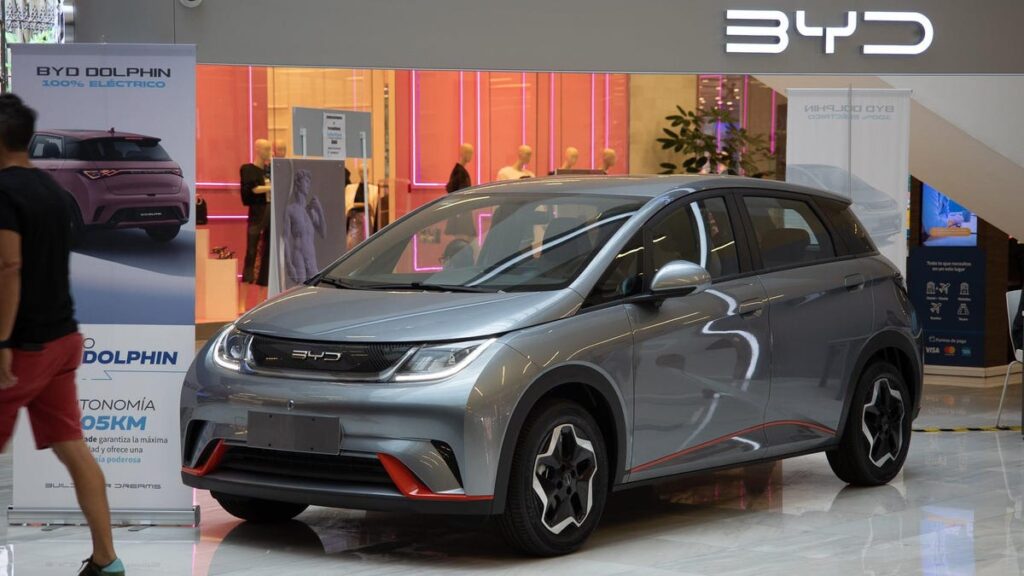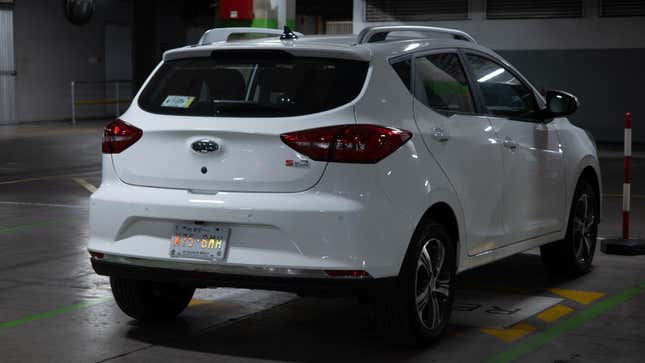Mexico Is China's Trojan Horse In The War For EV Dominance Against The U.S.

The U.S. and China are in a power struggle right now, and its outcome is going to reorganize the roles both countries play in global automotive production. The U.S. wants to be more independent from China for its EV production, but China is not going to cede its dominance. In fact, China plans to increase its footprint in EV production and is eyeing Mexico as the next market to infiltrate. In so doing, it’ll be that much closer to the U.S. if it succeeds. Or if it fails, it’ll at least still be part of America’s EV supply chain, by proxy. Welcome to Mexico, China, where the pan dulce is good and the U.S. market awaits.
2024 Acura Integra Type S | Jalopnik Reviews
Go watch this video from MotorTrend, featuring Jalopnik alumnus Kristen Lee. It’s a long video, but is worth the time investment because she lays out how Chinese automakers are making inroads into Mexico’s budding EV auto market. And that could be their way into the U.S. auto market, eventually. Whether through actual Chinese EVs coming to the U.S., or through production partnerships with legacy automakers that are based in America.
MOTORTREND INVESTIGATES China’s EV Takeover of Mexico
Mexico is already a manufacturing powerhouse for many of the auto giants. Whether that’s GM, Ford or Stellantis, Mexico is host to a huge sector of automotive production that yields products destined for the U.S.
And this is why Mexico is such an attractive market for the Chinese. Mexico is one of the three key players in the USMCA. Dammit, it’s right there in the name: the United States-Mexico-Canada Agreement. The latest free trade agreement between the U.S. and its direct neighbors affords these adjacent countries benefits that many other countries are not privy to.
In essence, cars manufactured in Mexico are given preferential treatment as import goods. This is already happening now. BMW, GMC, Chevrolet, Ford. They all make cars in Mexico that are sold in the U.S. precisely because they can pay workers in Mexico less than workers in America, then sell their cars with huge profit margins. The GMC Sierra and Chevy Silverado come to mind.
These are veritable cash cows for General Motors when you consider the meager investment in labor and costs compared to the prices of these full-size trucks in America.
Chinese-made cars will be too costly to sell in America, making them uncompetitive. But Mexican-made Chinese cars are a natural progression for automakers like BYD, JAC, Chirey and MG — all of which are planting their flag in Mexico. The USMCA itself outlines the benefits to making cars in the country, which the Chinese can leverage.
The key is legacy automakers themselves are going to enable the Chinese to claim victory in Mexico, and, by proxy, the U.S. Well, maybe. Or at the very least, use Mexico as the pathway to the U.S. at some point.
The prospect of being a major player in an auto market so close to the U.S. is too tempting for China to overlook. These OEMs from the East don’t have to break through the U.S. gates, because automakers will open the door for them.
The Chinese are already making huge investments in Mexico: in 2022, they dumped $397 million into the republica in the form of investments for auto assembly, per MotorTrend. Battery production, too. All China has to do is cozy up to our Southern neighbor, and before we know it, China is a crucial player in North American EV production.
Cars are part of the cultural fabric of the U.S. and the EV transition has given China a convenient way to reshuffle the board when it comes to global auto production. Mexico is the way into the U.S., and the Chinese know it.
Photo: Jalopnik / José Rodríguez Jr.

Photo: Jalopnik / José Rodríguez Jr.



